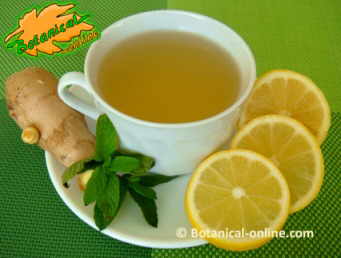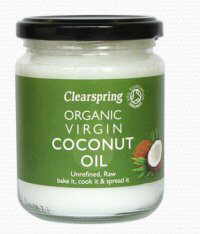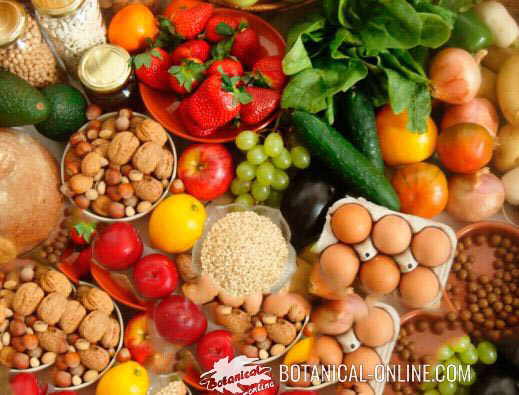Contents
- 1 Brewer’s yeast benefits
- 1.1 FOOD PROPERTIES OF BREWER’S YEAST
- 1.2 What is brewer’s yeast?
- 1.3 When was brewer’s yeast discovered?
- 1.4 Brewer’s yeast uses
- 1.5 Heath benefits of brewer’s yeast
- 1.6 High amount of protein of Brewer’s yeast
- 1.7 Low content in fats and many carbohydrates of Brewer’s yeast
- 1.8 High levels of vitamin B of Brewer’s yeast
- 1.9 Brewer’s yeast for constipation and stress
- 1.10 Mineral wealth of brewer’s yeast
- 1.11 How to eat brewer’s yeast?
- 1.12 Cautions and interactions
Brewer’s yeast benefits
FOOD PROPERTIES OF BREWER’S YEAST
What is brewer’s yeast?
It is a type of leavening or unicellular fungus (Saccharomyces cerevisiae) that is used for the production of beer. The scientific name of the genus of the fungus comes from the Greek “sakar” meaning sugar and “mikes” which means sugar. The cerevisae species name comes from Latin and means beer.
The name of this fungus is due to the fact that it feeds on sugars. More specifically, when being in a sugary place, under appropriate conditions of temperature and humidity, a transformation is produced of sugars (glucose) plus the water of the environment in which it dwells in carbon dioxide and alcohol (ethanol), as described in the following formula:
When was brewer’s yeast discovered?
Probably the discovery of this process was made by chance in Mesopotamia between 10,000 and 6000 BC, when a farmer who wanted to make barley bread, missed the proportion of ingredients including flour mixture and water much more water than flour. The fermentation process originated an alcoholic liquid with a distinctive taste that we now know under the name of beer. The organism that made this transformation possible is now known as brewer’s yeast.
Whether this process was or not the origin of beer, the fact is that we know that in Mesopotamia people dominated the fermentation technique for barley. In Egypt, papyri tell us how undercooked bread was left to ferment in water waiting for the transformation to occur.
Modern scientific studies have found that the yeast Saccharomyces cerevisiae is a kind of very common fungus, which can easily be found in nature. It is a microorganism which habitually appears in our body, mainly in the digestive tract and skin.
Brewer’s yeast uses
Currently, it is used industrially for the production of beer, although modern breweries prefer to use another yeast (Saccharomyces carlsbergensis) whose name was coined by the Carlsberg brewery in Copenhagen, while the original yeast is being used by other smaller industries.
The taste of brewer’s yeast is bitter and should not be confused with baker’s yeast that is used to make bread, wine or other foods. From the point of view of research, it has been used in numerous studies on genetics. Apart from these uses, it is also grown for sale as a dietary supplement.
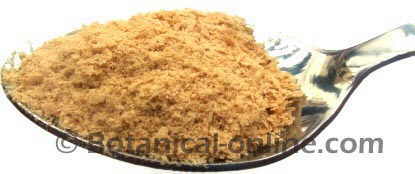
Photo of a spoonful of brewer’s yeast flakes
Brewer’s yeast is used as a dietary supplement should not be confused with that used to raise bread or making beer. This yeast is dried at high temperatures which determines that it is capable of fermentation. This yeast is obtained as a byproduct from the fermentation of beer or is cultivated in order to use it for its healing properties.
Heath benefits of brewer’s yeast
Among the principal properties of yeast as a dietary supplement, we would like to highlight the following:
- A high amount of protein
- Low content in fats and many carbohydrates
- High levels of vitamin B
High amount of protein of Brewer’s yeast
Protein is needed for the construction and regeneration of the body. Its importance in the formation of enzymes and other chemical processes is vital. Brewer’s yeast is rich in protein. Its protein (from 45-60%) is higher than wheat germ (23.15%), and soybeans (16.64%) and higher than beef (31.5%). Embedding this supplement in our diet is a health guarantee.
Our nails, our muscles, our hair will show a great vitality and strength. It is perhaps for this reason why many athletes include it in their diet, although many reviews seem to rule out its effectiveness to reduce fat and muscle. This is why this dietary supplement it is recommended in the diet to overcome the lack of strength or in cases of chronic fatigue.
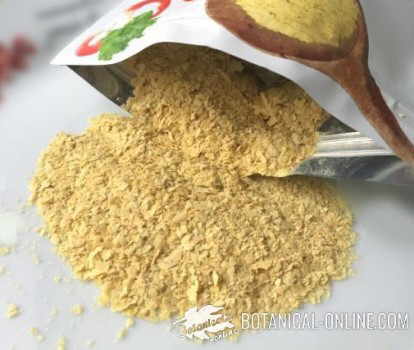
Photo of a spoonful of brewer’s yeast flakes
* Related information: Brewers yeast for hair?
Low content in fats and many carbohydrates of Brewer’s yeast
Carbohydrates of yeast provide energy to our body. Getting energy from the ingestion of plant foods, such as brewer’s yeast, helps you get energy advantage over food from animal origin.
Cereals do not contain cholesterol so it does not affect the incidence of many cardiovascular diseases. Soy lecithin contains about 32% carbohydrate and 14% fat.
High levels of vitamin B of Brewer’s yeast
Brewer’s yeast contains high amounts of vitamin B. The importance of this vitamin in the processing of fats, proteins and carbohydrates into energy is vital. Vitamin B plays an important role in nervous system health and the production of hormones, enzymes or proteins, as well as strengthening the immune system .
This vitamin is very important for the elderly and for vegetarians, who have a very strict diet with no feeding of animal flesh, eggs, milk and derivatives. In both cases, if you do not ingest rich vitamin B plant foods deficiencies can manifest.
Brewer’s yeast for constipation and stress
Taking brewer’s yeast supplement can help profiting food better, being also very suitable for those with problems of constipation. Brewer’s yeast can help prevent infections or diseases by stimulating the immune system. May also help recover from skin problems such as wounds, eczemas, burns, etc.
Brewer’s yeast can be very helpful during periods of nervousness. Its content in vitamin B makes it very suitable to help the nervous system to recover from stress, anxiety or even depression.

Yeast is adequate to help improve students performance
Mineral wealth of brewer’s yeast
Among its many minerals content, chromium is the main one. Chromium intervenes in the metabolism of carbohydrates, fats and proteins, and it is essential for proper distribution of insulin in cells. It has been shown that people with diabetes maintain levels of blood sugar more stable when taking chromium supplements or eat foods rich in chromium such as apples, nuts, barley or broccoli. Animal foods that are richer in this mineral include meat beef or oysters.
Many studies confirm that levels of chromium from many people in the Western world are low, reason why you should eat more foods rich in chrome or take supplements that contain it. Incorporate brewer’s yeast to your diet can benefit many people but especially those with diabetes.
Some specialists recommend to take this supplement in the treatment of high cholesterol levels. They also attribute to chrome the capacity to reduce cholesterol. Others, nevertheless, consider that it is not really effective in the treatment of this disease.
Other minerals that the brewer’s yeast contains in high levels are selenium, zinc, phosphorus, and magnesium.
How to eat brewer’s yeast?
You can buy brewer’s yeast in powder form or in the form of flakes, to add them directly to your food. There are also pills that can be eaten directly because some people do not like the bitter taste of this product. If you prefer to add it to your food, you can opt for other special products in the form of flakes or dust, to which bitterness has been removed.
Yeast can be used by introducing it into yogurt, smoothies, juices, soups, etc. A very sweet juice is in the best way to disguise its bitter taste. Another way to take it is sprinkled on salads or mixing it with vegetables. However, when we get used to the taste, this is not a problem to avoid it.
The usual dose is generally about two or three tablespoons daily. It is best to gradually distribute it in the different foods that do not alter too much the flavor of food. If we prefer to taken tablets, we will often eat from 6 to 15 tablets daily. In any case, it is better to look at the prospectus to see the proper amount. There are not enough studies on its use in younger people.
Cautions and interactions
Some people may manifest adjustment problems to this supplement because they are not accustomed. Among the most common symptoms of these initial problems are: itching, skin spots or urticaria. Another possible symptom of lack of initial adaptation is the development of flatulence.
It is convenient to start getting used to taking small amounts to avoid the initial problems. 1/8 of a teaspoon of coffee per day or less. Gradually, this amount will be increased to reach the final dose.
Not enough studies have been carried to determine whether it should or not be provided to pregnant women or infants. Similarly, in case of illness or medication, consult your doctor. There have been cases of hypertension in patients taking certain medications for depression. (Inhibitors of monoamine oxidase-MAO). It may interact with medications for the treatment of fungi (antifungal).
Composition of brewer’s yeast 3 teaspoons (16 g) | |
| Ungerminated whole grain | |
| Water | 4 g |
| Energy | 62 kcal |
| Fat | 0, 83 g |
| Protein | 8, 34 g |
| Carbohydrates | 7, 20 g |
| Potassium | 20000 mcg/g |
| Phosphorus | 10900 mcg/g |
| iron | 48 mcg/g |
| Sodium | 320 mcg/g |
| Magnesium | 1300 mcg/g |
| Calcium | 700 mcg/g |
| Copper | 8 mcg/g |
| Zinc | 197 mcg/g |
| Manganese | 5,9 mcg |
| Vitamin C | 0 mg |
| Vitamin A | 0 UI |
| Vitamin B1 (Thiamin) | 600 mcg/g |
| Vitamin B2 (Riboflavin) | 600 mcg/g |
| Vitamin B3 (Niacin) | 3500 mcg/g |
| Vitamin B6 (Pyridoxine) | 600 mcg/g |
| Folic acid | 15 mcg/g |
![]() More information on other food supplements
More information on other food supplements


